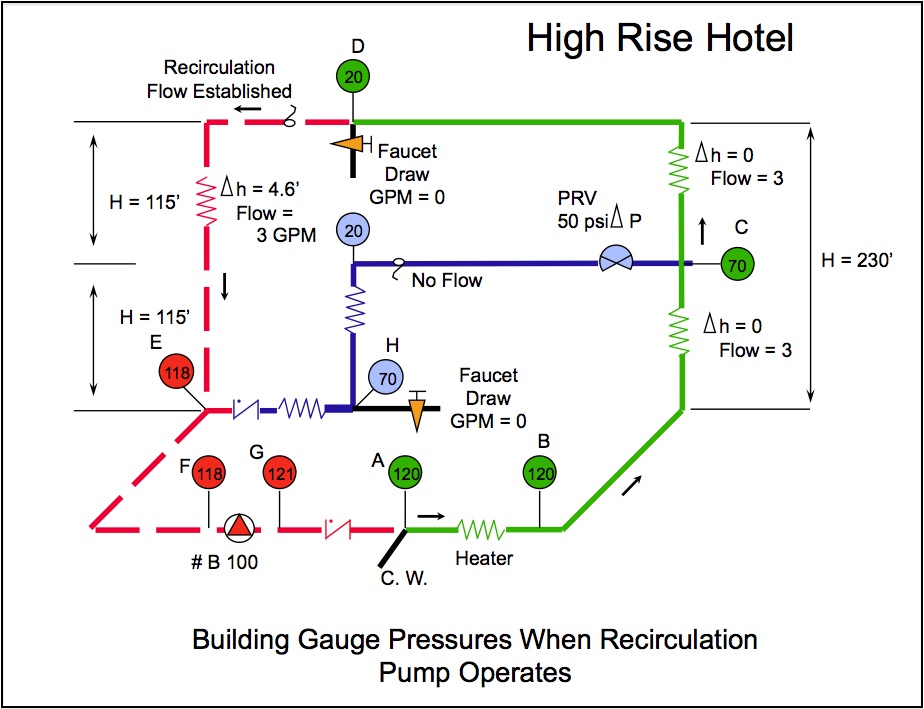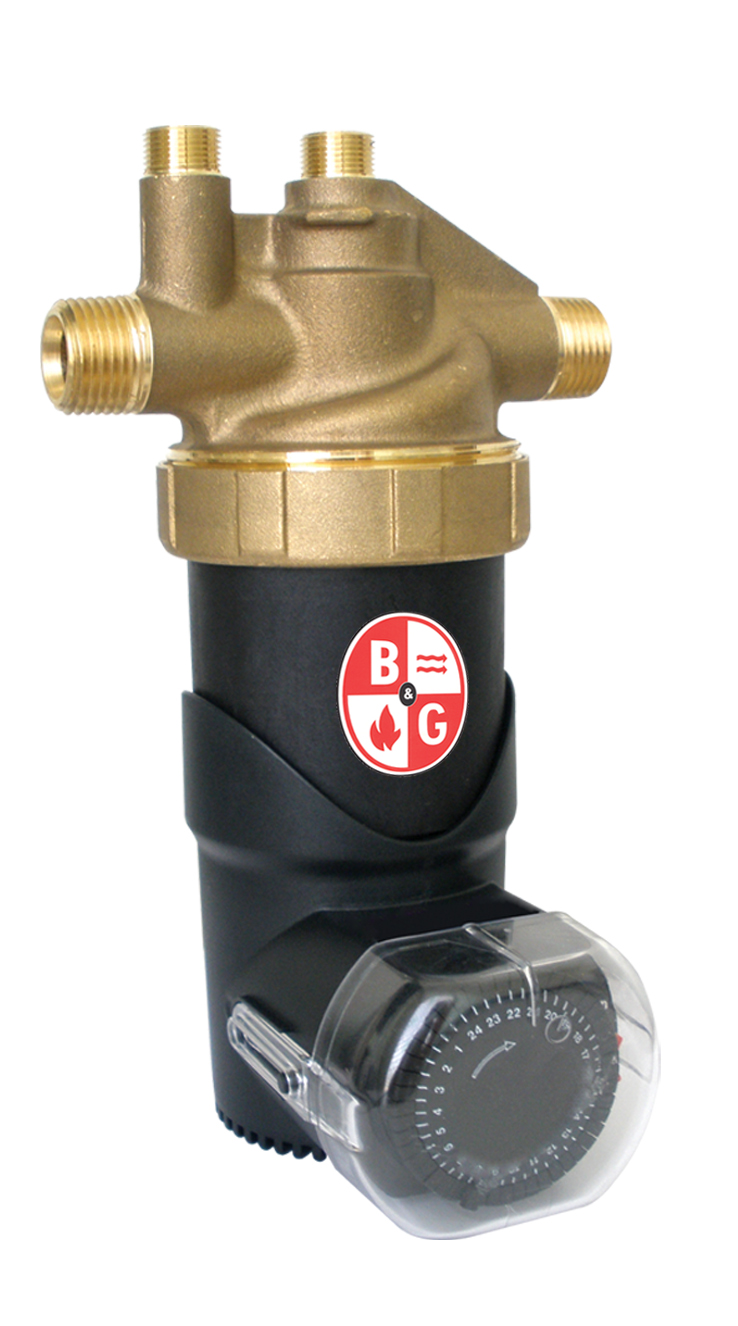Domestic Hot Water Recirculation Series
Featured

Domestic Hot Water Recirculation Part 8: Proper Application of Pressure Reducing Valves
Pressure reducing valves (PRVs) are a necessary component in just about any domestic hot water system served by a high-pressure domestic water supply main. In this blog we’ll discuss how to apply PRVs properly so that these “necessary components” don’t become necessary evils that create water service problems and huge energy penalties for owners.
Ever have to wait 2 or 3 minutes (or longer) for hot water to arrive at the shower in a hotel room? If you know a little about plumbing design you may assume you’ve had the misfortune of choosing a hotel without a recirculation system. But chances are the hotel does have a recirculation system, it just isn’t properly balanced.
Applying recirculation to domestic hot water systems with steam type instantaneous water heaters requires a little extra attention. The challenge is temperature control. Under very low load conditions, instantaneous water heater supply temperatures may fluctuate rapidly – even dangerously. Here’s why:
During periods of light draw, the heater flow rate may become unstable, fluctuating between a minimal/no load draw recirculation flow rate and that same flow rate plus the draw of a single fixture. That’s what happens when a single hotel guest decides to take a shower at 3AM.
Not every domestic hot water recirculation system requires a return line. For residential and light commercial applications, there is another way to save water and maintain hot water at the last fixture. It involves connecting a specially designed recirculation pump....
Designing a domestic hot water recirculation system is not typically difficult. In fact, we see the exact same model recirculation pump used in application after application without incident, as this one pump is typically able to meet the minor head and flow requirements of most recirculation systems. That said it is important to work through the proper design procedures for any recirculation system. A little time up front can save a lot time (and money) after the fact.
Whether you are thinking of installing a recirculation pump in a 3-bedroom home or designing a recirculation system for a 20-story office building, the role of the recirculation pump is always the same. Clearly, the pump is moving the water in order to keep hot water at or near the tap—but that’s really a simplified explanation of the pump’s role.
When it comes to domestic hot water recirculation design, OSHA safety provisions and ASHRAE 90.1 energy efficiency requirements have put plumbing engineers between the proverbial rock and hard place.
In an effort to minimize the energy penalty associated with mandatory domestic hot water recirculation, ASHRAE 90.1 has created operational parameters for these systems. The problem is that these parameters are in direct conflict with OSHA’s requirements for Legionella prevention.
What could have led ASHRAE, and subsequently building codes all over the U.S., to require domestic hot water recirculation systems in non-residential buildings? This relatively bold stance on water conservation is quite simply a reaction to profound water shortages throughout the U.S. – shortages that will only get worse as the population continues to increase.









